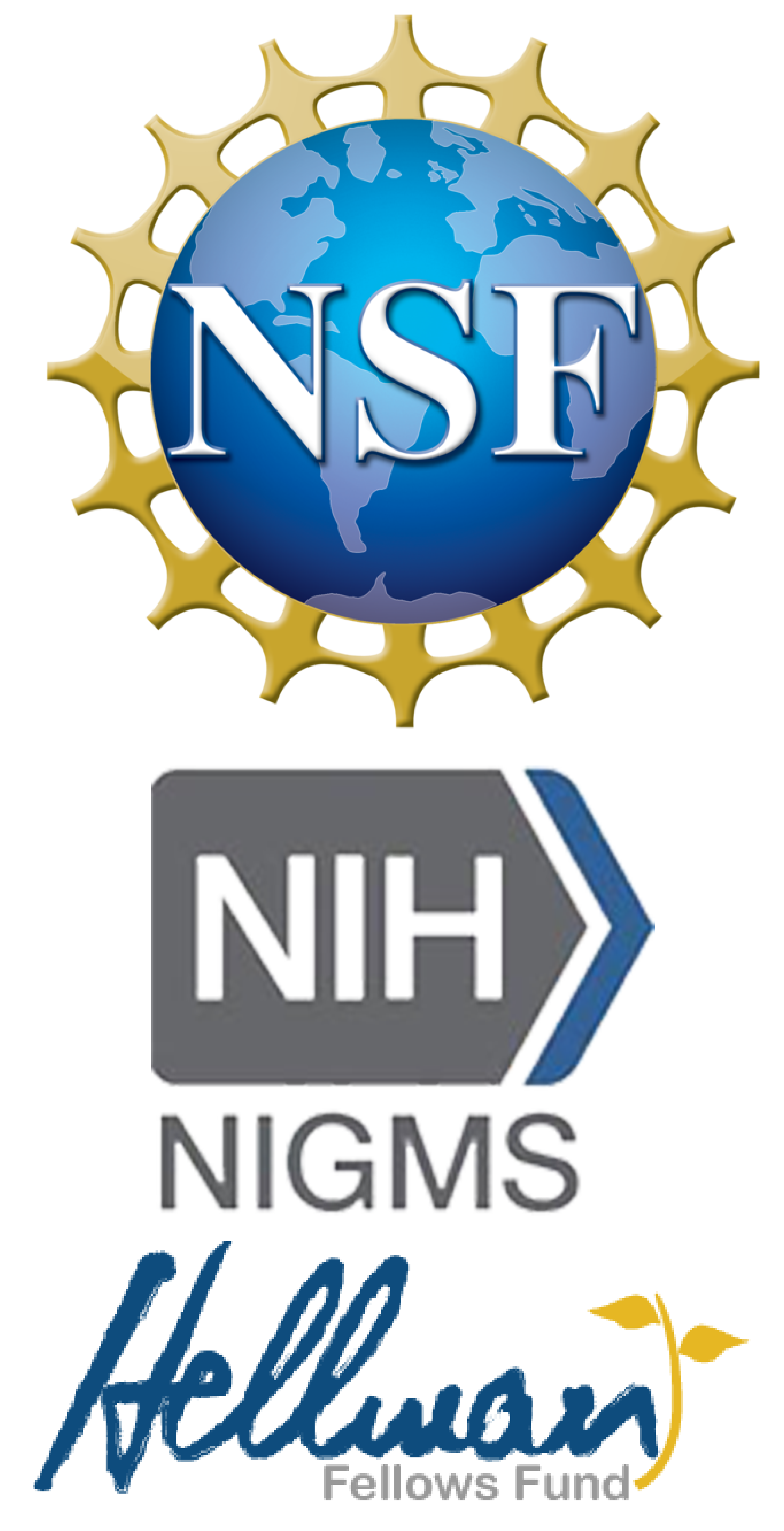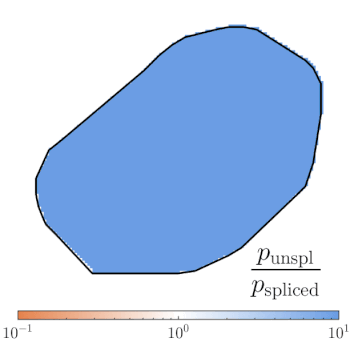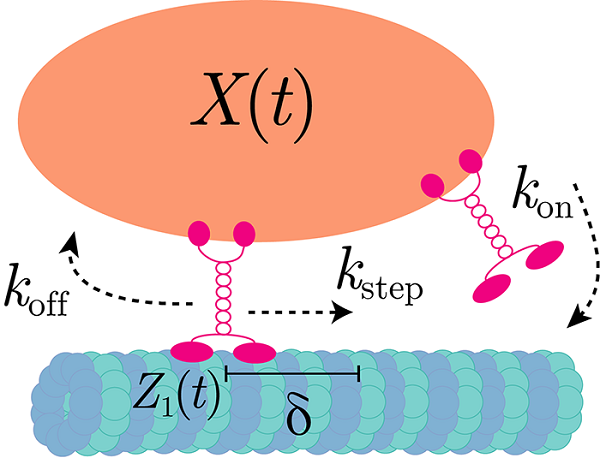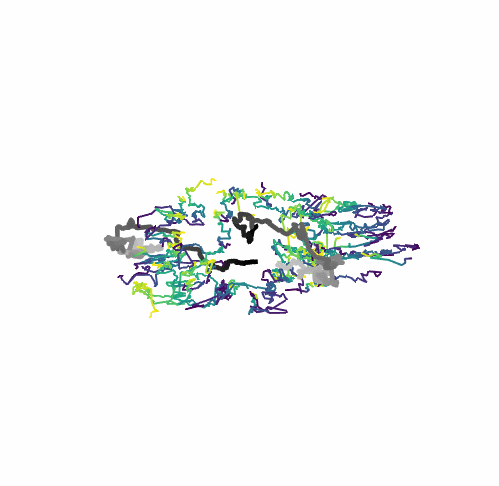Research
Funding

Our group gratefully is supported by the National Science Foundation [NSF CAREER 2339241, NSF/NIGMS 2451263], National Institutes of Health [NIH NIGMS T32], and a Hellman Fellowship.
Recent Themes
Subcellular spatiotemporal dynamics of gene expression

Microscopes can now image genetic machinery at scales down to individual molecules. What does their spatial organization tell us about the rules of life? Our group is interested in using mechanistic biophysical models to dissect the underlying processes.
Our recent work in this realm has largely focused on developing mathematical connections between spatial point processes and stochastic reaction diffusion models, so that they may be used to study spatial transcriptomics data.

Self-organization of cytoskeletal systems
Cells rely on teams of motor proteins to perform a zoo of tasks ranging from carrying cargo enormous distances in intracellular transport to arranging chromosomes in mitosis. These motors behave randomly as individuals yet unite harmoniously as collectives.
A central theme of our research pursues the question: how do cytoskeletal systems self-organize reliably from stochastic ingredients? Our recent work in this area includes simulation-based inference and a variety of stochastic models.
Leveraging machine learning with mechanistic stochastic models

Methods in quantitative biology largely divide between mechanistic or statistical modeling. Although our group is not focused on "tool making", we have increasing interests in developing middle-ground approaches that leverage the strengths of both paradigms.
Recent pursuits range from adapting variational Bayesian inference to chemical reaction models and exploring the replacement of components in complex models with black-box learned functions using physics informed neural networks.
Collaborators
Our group is fortunate to collaborate with many incredible scientists. Some recent past and present collaborators include:
